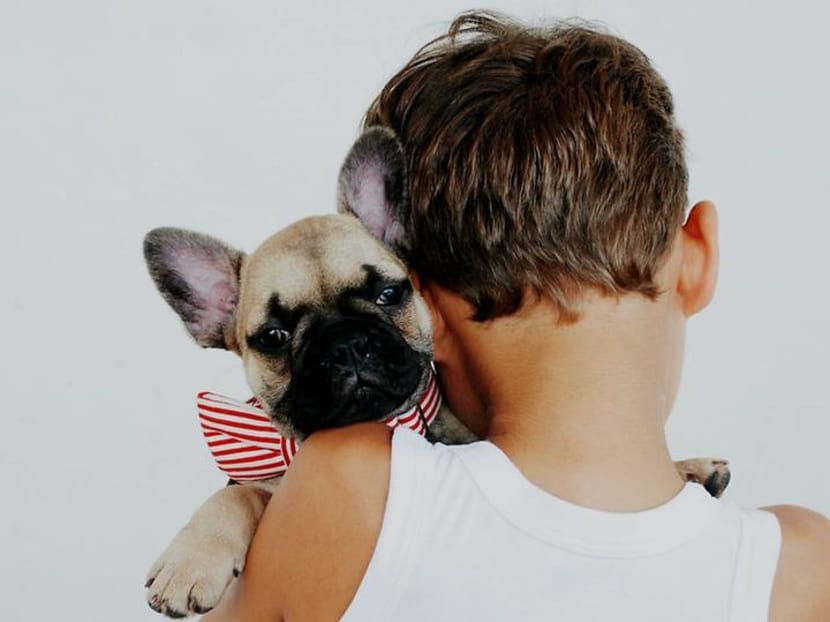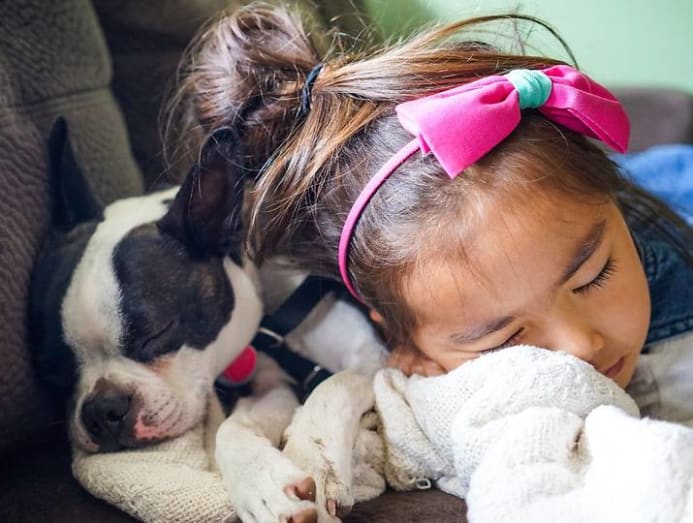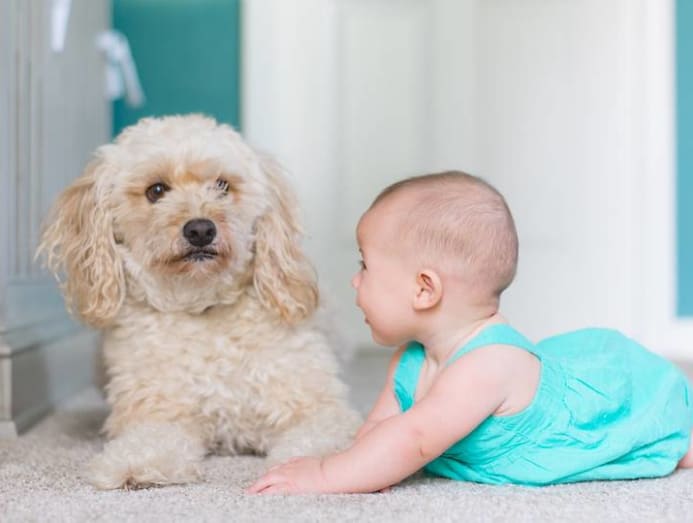Pet dogs match movements with child owners as sign of emotional bonding
Dogs orient and move in synchrony with family members, which may have implications for the emotional development of people and pets.

(Photo: Unsplash/Alicia Jones)
Family dogs match their movements to those of the children they live with, according to a poignant new study of young people and their pets.
In the study, pet dogs moved when their accompanying children did and remained still when they stopped, a physical synchrony that often signals emotional bonding.
The family canines also tended to stay close by and to orient themselves in the same directions as the kids, a further indication of social engagement and attentiveness that could have implications for the emotional development of both dogs and youngsters, as well as for the safety of the interactions between them.
The results add to the growing evidence that how people and other creatures move depends to a surprising extent on who they are with, and that social connections can be shaped and strengthened by shared activity.
The findings also raise practical questions about how children and dogs can best learn to read each other’s body language, and how family pets might help to encourage children to move more or best serve as a source of emotional support.
The idea that being around others influences how we move is not new. Past research shows that romantic couples tend unconsciously to synchronise their walking pace to a much greater extent than strangers do and that men often speed up when walking with other men, even if the new pace is not physiologically comfortable for them.
In the study, pet dogs moved when their accompanying children did and remained still when they stopped, a physical synchrony that often signals emotional bonding.
In the same way, moving together seems to build familiarity, even if it did not exist before. People who take up dancing together, for instance, often express greater closeness and cohesion afterward. Moving in tandem seems to generate intangible, intimate bonds.

Other research suggests that these connections are not limited to humans. When, during earlier studies, scientists asked adults to bring their pet dogs to large, unfamiliar rooms and then walk around the space, sometimes pausing, sometimes changing direction, and not directly engaging with their pets, the dogs followed and repeated their owners’ actions to a remarkable degree.
About 80 per cent of the time, the dogs walked when their owners walked and fell still when they stopped. They also usually turned and pivoted whenever their owners did, so that they stayed oriented in the same direction.
READ: Is your pet cat or dog really happy you’re at home all the time – or stressed out?
Dogs in shelters likewise aped the actions of their primary caregivers, other studies showed, but to a lesser extent than among family dogs, indicating looser bonds.
Little was known, though, about whether pet dogs similarly synchronise themselves with their family’s children. So for the new study, which was published in January in Animal Cognition, researchers at Oregon State University in Corvallis turned to a group of previously assembled volunteers.
As part of a planned, long-term study of animal-assisted interventions for children with developmental differences, the scientists already had recruited local families with children aged 8 to 17 and their pet dogs.
They now asked 30 of the children, some with developmental differences, such as autism, and some without, if they would bring their dogs to a large, warehouse-like space. The dogs, ranging in breed from floppy retrievers to a Jack Russell mix, a whippet, several poodles and a Great Dane, had received no special training at the time. They were pets.
I think children, even young children, are capable of taking on more of the responsibility of training pets than we give them credit for.
The researchers asked the youngsters to follow pathways marked with tape in the cavernous space, pausing sometimes, and switching directions, without touching or talking to their dogs.
The researchers filmed and later analysed each duo’s interactions and found that the dogs stayed close to their young owners, walking or stilling in tune with them more than 60 per cent of the time.
The dogs also turned frequently to face in the same direction as the child, like greenhorn square dancers.

Their synchrony was less than researchers had noted earlier among adults and their dogs but far greater than would be expected by chance, the researchers concluded.
“The dogs clearly were paying attention and adjusting their behaviour” in response to the actions of the child, says Monique Udell, an associate professor of animal sciences at Oregon State and senior author of the study.
READ: Wish you could understand what Fluffy is saying? The 'animal whisperer' class is in session
But the distance between their synchrony and that of dogs with their adult owners suggests that families with children and dogs might want to have the young people spend more time walking, working with, feeding and playing with their pets, she says.
“Let them learn to read each other’s body language,” she says. “I think children, even young children, are capable of taking on more of the responsibility of training pets than we give them credit for,” she says.
And in the process, the pets likely learn to respond more deeply to the child, she says.
This study was very small and short-term, though. Dr Udell hopes to enroll more dogs and children and follow them during service-animal training, watching to see if, for instance, children start to orient themselves to the actions of their dogs, as well as vice versa, and if there are differences in synchrony according to a child’s age or dog’s breed.
She and her colleagues also are interested in studying the bonding and interwoven movements of people and other types of pets, particularly cats.
“We’ve done a little work with cats and, so far, they blow everything out of the water in terms of being socially responsive to their owners’ behaviour,” she says.
No experiments currently are planned, however, to test the synchrony of cats and dogs.
By Gretchen Reynolds © The New York Times
This article originally appeared in The New York Times.
https://www.nytimes.com/2021/03/17/well/move/dogs-kids-family.html



